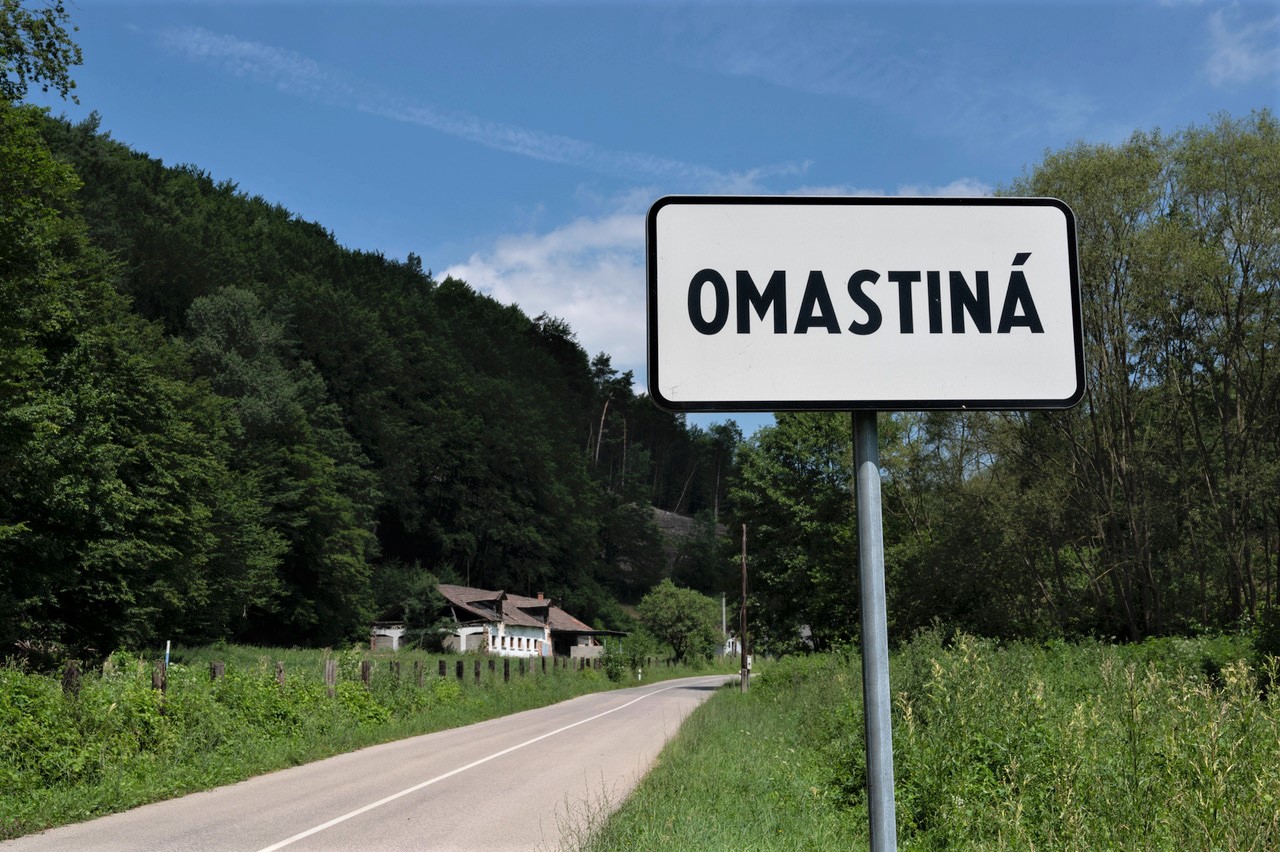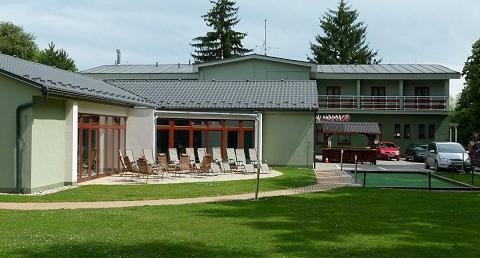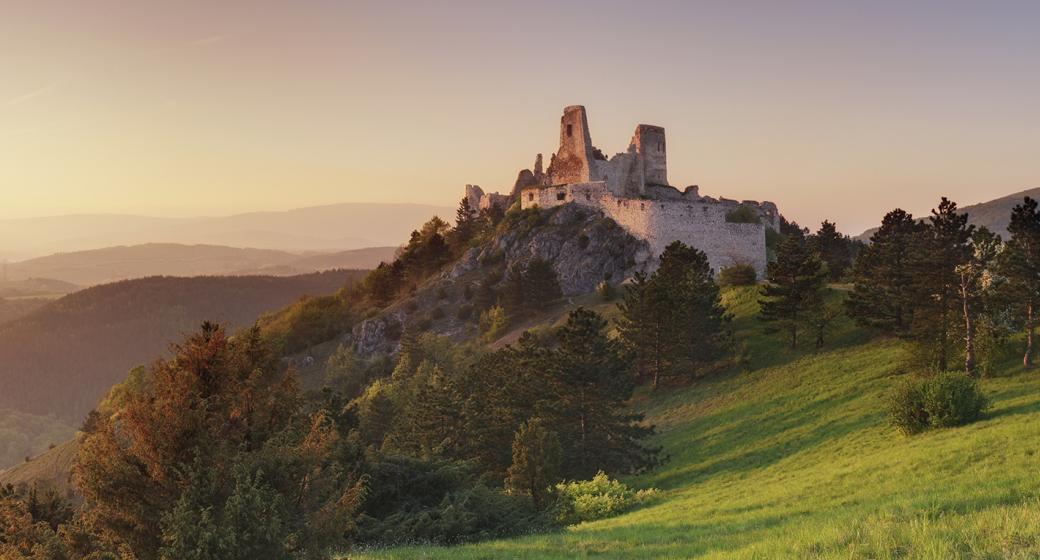


Tucked under Rokoš, protected by the Uhrovec castle. And it is not a village, but rather a village. Although its inhabitants are constantly decreasing, it is a paradise for cottagers who are looking for peace and escape from the usual worries of life. Welcome to Omastina.
Only a quarter of an hour by car from Bánoviec nad Bebravou, on the southwestern spur of the Strážovské vrchy, surrounded by the Rokoš and Čierny vrch hills, is the picturesque village of Omastiná. Its name is probably derived from ointment. Few people will remember the original name of the term. In the past, there were also the names Mazna Lehota, Omazchyna Lhota, Omastina Lehota or Omasztina.
When you come here, it's as if you find yourself in another dimension, literally at the end of the world. It would be more expressive to say "where the crows turn" or "where the foxes say good night". Decades ago, there was more living here than now. Omastiná remembers the times when it had 500 inhabitants. Today you can count them very easily, because there are barely fifty of them. It ranks not only among the smallest municipalities in the Trenčín region, but also in the whole of Slovakia. At least it's busier here on the weekend. Cottagers discovered a village in the lap of nature, which offers many tourist possibilities, attractions in the area and, above all, peace. “It's a treat to get out of the city on your days off. We don't miss anything here, there is beautiful nature, hiking trails, so we are completely satisfied," says the man with the snowmobile from Bánoviec nad Bebravou.
Traditional buildings
Here, people were primarily engaged in plant and animal production, and thus large and larger estates were created. The entire village is a preserved testimony of the original folk architecture. Traditional stone houses, separated by a stream running through the center of the village, have been preserved here. If you go along its course, you will reach a place that is perfect for refreshing on warm days. There is crystal clear water with a gentle waterfall. Houses in Omastina are popularly referred to as houses with "heights", which were chambers on floors that were usually accessed via an external staircase. They stored hay there and bachelors often slept there. The scenery of the striking village is completed by the village belfry built on a square plan with a baroque bell from 1742. During the times of the first Czechoslovak Republic, a school was built in Omastina. There was also a water mill with a gutter, which came from the end of the 18th century and disappeared in 1959. After the advent of socialism, the Jednotné roľnícke družstvo was formed in the agriculturally active village, electricity was introduced in the 1970s, and water supply in the 1980s.
More cottagers than domestics
The future of Omastina took shape in the 1960s, when they ordered a construction ban. This forced many residents to seek refuge elsewhere. Even the Gentle Revolution and the end of the ban did not motivate people to return. Also thanks to this, there are now twice as many cross-country players as domestic ones. They get along with each other, everyone knows each other here, they don't have any disputes. However, Omastiná also attracts one-day tourists who combine their visit with a visit to Uhrovské Castle or Uhrovec, the birthplace of the greats Ľudovít Štúr and Alexander Dubček. Ascents to Rokoš Hill also start from Omastina, which, according to historical records, was a frequent refuge of Ľudovít Štúr. That is why a monument dedicated not only to Štúr, but also to Dubček was built here in 1968 and restored in 1998. "Just talk to the winds and whisper in the mountains, here on these native mountains, on the heights of the free ones, how nice it is here, how free it is, how good it is here, how peaceful!" are Štúr's words from 1846, which are engraved on the monument.
To the caves
The natural scenery is completed by three caves located near the village - Košutova, Žernovská and Vlčí dol, which were also used during the battles in the SNP. It was inhabited by people and in 1995 it was declared a natural monument. Various archaeological artifacts have been found here, but it is not open to the public. The cave is hidden in the slope, on the way you will come across a log cabin and two troughs. It is a grateful destination for a short hike that starts at the municipal boarding house near the well. Why at the well? There is a well-preserved Garajka well with a wooden cover. In the guesthouse you can recharge your batteries for other tourist activities. In addition to accommodation and food, it offers the possibility of renting bicycles or the possibility of grilling on the premises.
A strong legacy of the SNP
During the Second World War, there was also fighting in the vicinity of Bánoviec nad Bebravou. The well-hidden caves in the vicinity offered the partisans an ideal refuge. Ján Žižka's partisan brigade was also based here. At that time, mainly shoemaking workshops were established in Omastina. However, the residents paid extra to help the resistance fighters, as the Germans occupied the village, several houses were reduced to ashes and 14 people were killed. Another 42 were either taken to concentration camps or imprisoned. The Monument to the Victims of the SNP reminds of the strong legacy of the Slovak National Uprising right in the center of Omastina, and you can learn a lot of information in the Ján Žižka Museum in Bánovce nad Bebravou. So what? will you come Although Omastiná is located at the end of the region, it is worth visiting. Go here for a one-day trip and you will fall in love with the village at first sight. Perhaps you will find a refuge right here - either as a homeowner or a cottager. And just to have buttered bread with onion...

Oddych v prekrásnom prírodnom prostredí myjavských kopaníc. . Strávte víkend v…

Malebná zrúcanina viditeľná už z diaľky na vápencovo-dolomitickom kopci poskytujúca…